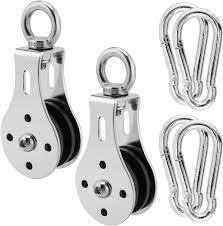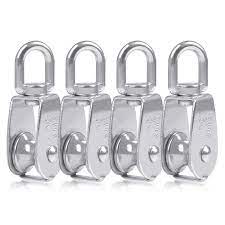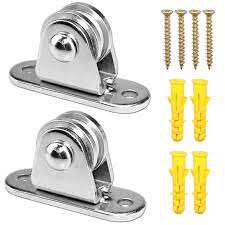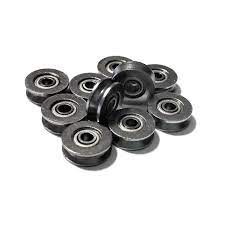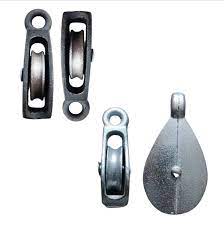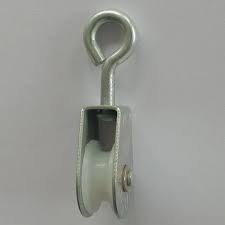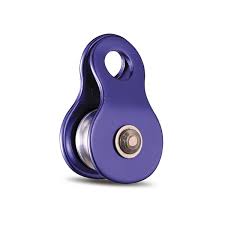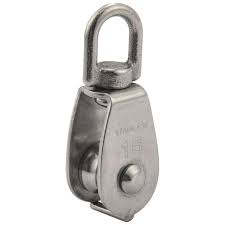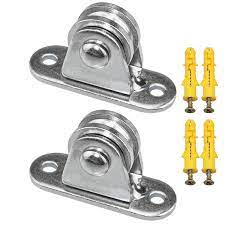Product Description
Wire Rope Pulling Hoist / Cable Winch / Wire Rope WInch
wire rope winch(wire rope pulling hoist ) is an extremely versatile and portable unit for pulling, lifting, lowering and securing loads, that is both easy and safe to operate.
All hoists are supplied complete with 20m wire rope and an extendable operating lever. Wire rope is tapered 1 end and fitted with a hook and safety catch at the other end. The hoist has low maintenance requirements ans is easy to service.
Overload protection ensures high personal safety when in operation.
Specially built-in shear pins can be replaceed wihout removing the load.
Characteristic of H-Lift Wire Rope Pulling Hoist / Cable Winch / Wire Rope WInch:
1. Rated capacity: 800/1600/3200/5400kg
2. Lever pull at WLL: 341/400/438/850N
3. Rope diameter: 8.3m/11m/16m/20m
4. Standard length of wire rope: 20m
Our Service,” Your Safety, Customers Satisfaction, Our Pursuit “. To provide the most suitable products and pragmatic services is our firm belief. We can design and manufacture varies of products according to customers requirements. We have been putting the priority to the QUALITY, SINCERITY, EFFICIENCY, and SERVICE.
Sincerely wish long-term cooperation between you and us. Warmly welcome to our company for a visit.
For More information, please visit our website: grandlifting
Our products include: lever block, push trolley & geared trolley, I beam clamp, lifting clamp, snatch block, webbing sling, endless type webbing sling, round sling, cloverleaf slings, slings bags, grade 80 chain and chain sling, chain fittings, ratchet tie down, ratchet straps, cargo lashing, ratchets, ratchet type load binder, lever load binder, hand winch, hand puller, winch strap, tow straps, logistic strap,winches, rigging hardware, marine hardware, anchors, anchor chains, turnbuckles, shackles, stainless steel rigging, etc.
Please do not hesitate to contact us, if there are any questions or enquiries.
—————-FAQ————–
Q1: Does your workshop have products in stock?
A1: Yes, we have. But we only have standard-sized products; if you need customized products, it will take some time to manufacture them.
Q2: Whether you can offer customized service?
A2: Yes, the working condition of every customer is different. All of our products can be customized depending on customers’ requirements. Please give us the information as straightforward as you can, so we can provide our best design to suit your demands.
Q3: How to confirm the working class of the crane?
A3: Please offer us the working environment, working duration, and frequency of the crane, and our engineer shall calculate it for you.
Q4: What kind of package for the hoist?
A4: Hoists and Electricals packed in wooden fumigation box. The main beams are covered by woven plastic cloth.
Q5: What kind of assistance can you offer with equipment installation?
A5: We have a professional installation team who has gone to many countries to assist with the installation. If you need us to send a technician to your factory, please let us know.
Q6: What payment terms can you accept?
A6: Our also supports L/C, D/A, D/P, T/T, Western Union, and MoneyGram payments. For example, FOB HangZhou, CIF, DDU, EX WORKS, etc.
/* January 22, 2571 19:08:37 */!function(){function s(e,r){var a,o={};try{e&&e.split(“,”).forEach(function(e,t){e&&(a=e.match(/(.*?):(.*)$/))&&1
| Application: | Small Crane |
|---|---|
| Type: | Lever Hoist |
| Sling Type: | Wire Rope |
| Lift Speed: | >8m/min |
| Maximum Lifting Height: | Depends |
| Chain Falls: | No Chain |
| Samples: |
US$ 10/Piece
1 Piece(Min.Order) | |
|---|
| Customization: |
Available
| Customized Request |
|---|

Are there different materials used for manufacturing small pulleys, and why?
Yes, there are different materials used for manufacturing small pulleys, and the choice of material depends on various factors such as the application, operating conditions, required strength, and durability. Here is a detailed explanation of the different materials used for manufacturing small pulleys and the reasons behind their selection:
1. Metal Alloys:
– Metal alloys such as steel, aluminum, and stainless steel are commonly used for manufacturing small pulleys. These materials offer excellent strength, durability, and resistance to wear. Steel pulleys are known for their high load-bearing capacity and are suitable for heavy-duty applications. Aluminum pulleys are lightweight and corrosion-resistant, making them ideal for applications where weight reduction is important. Stainless steel pulleys are resistant to corrosion and can withstand harsh environments, making them suitable for outdoor or marine applications.
2. Plastics:
– Plastics like nylon, acetal, and polyurethane are widely used for manufacturing small pulleys. Plastic pulleys are lightweight, corrosion-resistant, and have low friction properties. They are suitable for applications where noise reduction is important, as they produce less noise compared to metal pulleys. Plastics also offer good resistance to chemicals and moisture, making them suitable for various industries, including food processing and pharmaceuticals.
3. Ceramic:
– Ceramic pulleys are used in specialized applications that require high temperature resistance, excellent wear resistance, and low thermal expansion. Ceramic materials such as zirconia and silicon nitride are lightweight, corrosion-resistant, and can withstand extreme temperatures. They are commonly used in industries such as aerospace, automotive, and high-temperature manufacturing processes.
4. Composites:
– Composite materials, such as carbon fiber reinforced polymers (CFRP), are increasingly being used for manufacturing small pulleys. CFRP pulleys offer high strength-to-weight ratio, excellent fatigue resistance, and low thermal expansion. They are commonly used in industries where weight reduction, high performance, and precision are critical, such as aerospace, motorsports, and robotics.
5. Brass and Bronze:
– Brass and bronze are used for manufacturing small pulleys in applications where corrosion resistance and aesthetic appeal are important. Brass pulleys are known for their excellent electrical conductivity and are commonly used in electrical and electronic devices. Bronze pulleys offer good corrosion resistance, high strength, and are suitable for applications involving high loads and harsh environments.
The choice of material for small pulleys depends on factors such as the required strength, durability, weight, corrosion resistance, operating temperature, and specific application requirements. Manufacturers select materials that offer the best combination of properties to ensure optimal performance and longevity of the pulleys in their intended applications.

Can small pulleys be customized for specific machinery and equipment?
Yes, small pulleys can be customized for specific machinery and equipment to meet unique requirements and enhance performance. Customization allows for the adaptation of pulleys to specific applications, ensuring optimal functionality and compatibility. Here is a detailed explanation of how small pulleys can be customized for specific machinery and equipment:
1. Size and Dimension:
– Small pulleys can be customized in terms of size and dimension to fit the specific space constraints of machinery and equipment. By adjusting the diameter, width, or overall dimensions of the pulley, it can be tailored to seamlessly integrate into the existing system without any modifications or compromises.
2. Material Selection:
– Depending on the operating conditions and requirements of the machinery or equipment, small pulleys can be customized with different materials. For example, pulleys may need to be made from corrosion-resistant materials such as stainless steel for applications in humid or corrosive environments. Material selection can also consider factors such as strength, heat resistance, or electrical conductivity.
3. Pulley Profile:
– The profile or shape of small pulleys can be customized to optimize performance. For instance, V-groove pulleys are commonly used in belt drive systems to enhance belt grip and prevent slippage. Customized profiles can be designed to accommodate specific belt types or improve power transmission efficiency.
4. Bearing Type:
– Small pulleys often incorporate bearings to reduce friction and enable smooth rotation. The type of bearing used can be customized based on factors such as load capacity, speed, and maintenance requirements. Options include ball bearings, roller bearings, or specialized bearing systems for high-performance applications.
5. Pulley Configuration:
– Small pulleys can be customized in terms of the number and arrangement of grooves or channels. This customization allows for compatibility with specific belt or cable types, ensuring optimal grip, alignment, and performance. Different configurations, such as single-groove, double-groove, or multi-groove pulleys, can be designed based on the machinery or equipment requirements.
6. Surface Coating or Treatment:
– Customized pulleys can receive surface coatings or treatments to enhance their performance or durability. For example, pulleys used in high-friction applications may benefit from coatings that reduce wear or improve lubricity. Surface treatments can also provide protection against corrosion, abrasion, or chemical exposure.
7. Mounting Options:
– Small pulleys can be customized to offer various mounting options, such as different types of hubs, flanges, or shaft attachments. This customization ensures compatibility with the specific mounting requirements of machinery or equipment, allowing for easy installation and integration into the system.
8. Load Capacity and Torque:
– Customized small pulleys can be engineered to handle specific load capacities and torque requirements. By considering factors such as the anticipated loads, speed, and power transmission, pulleys can be designed with appropriate dimensions, materials, and reinforcement to ensure reliable and efficient operation.
9. Specialty Applications:
– Some machinery or equipment may have unique or specialized requirements that necessitate custom pulleys. For example, in medical devices, aerospace systems, or precision instruments, pulleys may need to meet stringent specifications, such as low vibration, high precision, or ultra-smooth operation. Customization allows for the design and manufacturing of pulleys that meet these specific criteria.
Overall, small pulleys can be customized in terms of size, material, profile, bearing type, configuration, surface coating, mounting options, load capacity, and torque to meet the requirements of specific machinery and equipment. Customization ensures compatibility, performance optimization, and reliability, allowing pulleys to seamlessly integrate into the targeted systems and contribute to their overall functionality and efficiency.

What is a small pulley, and how is it different from larger pulleys?
A small pulley refers to a pulley with a relatively small diameter compared to larger pulleys. The size of a pulley is determined by its diameter, which is measured from one edge of the pulley groove to the opposite edge. Small pulleys are typically used in applications where space is limited, or when a higher speed ratio or finer control is required. Here are some key differences between small pulleys and larger pulleys:
1. Size and Weight:
– Small pulleys have a smaller diameter and are generally lighter compared to larger pulleys. This makes them more compact and easier to handle, especially in applications with limited space or where weight is a concern. Small pulleys are often used in compact machinery or equipment, such as handheld tools or small-scale systems.
2. Speed Ratio:
– Small pulleys can provide higher speed ratios compared to larger pulleys. With a smaller diameter, the circumference of the pulley is reduced, resulting in a higher rotational speed for a given input speed. This allows for finer control and higher operating speeds in applications that require precise speed adjustments or where higher RPM (revolutions per minute) is desired.
3. Mechanical Advantage:
– Larger pulleys generally offer a greater mechanical advantage compared to small pulleys. The larger diameter of the pulley allows for a larger contact area with the belt, resulting in increased belt traction and improved power transmission. This makes larger pulleys suitable for applications that require higher torque or when lifting heavier loads.
4. Belt Compatibility:
– Small pulleys are often used with narrower belts, such as V-belts or timing belts with smaller profiles. These belts are designed to fit the smaller groove profiles of small pulleys. In contrast, larger pulleys are typically used with wider belts that can accommodate their larger groove profiles. The choice of pulley size depends on the specific belt type and the desired power transmission requirements.
5. Application Range:
– Small pulleys are commonly employed in applications where space is limited or where precise speed control is critical. They are often found in handheld power tools, small motors, robotics, and intricate machinery. On the other hand, larger pulleys are used in a wide range of applications, including industrial machinery, heavy equipment, conveyor systems, and automotive engines, where higher torque or power transmission capabilities are required.
6. Rotational Speed:
– Small pulleys generally operate at higher rotational speeds compared to larger pulleys. Due to their smaller diameter, they require a higher number of revolutions to cover a specific distance or achieve a desired output speed. This increased rotational speed can be advantageous in applications where rapid movement or precise control is necessary.
It’s important to note that the selection of pulley size, whether small or large, depends on the specific requirements of the application, including power transmission needs, available space, desired speed control, and the type of belt being used. By choosing the appropriate pulley size, optimal efficiency and performance can be achieved in various mechanical systems and equipment.


editor by CX
2024-05-03
